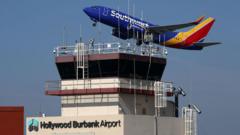As discussions intensify surrounding the wreckage of Air India Flight 171, the preliminary report by the Air Accident Investigation Bureau (AAIB) has ignited widespread speculation instead of providing clarity. The Boeing 787 Dreamliner, which tragically crashed into a building shortly after its departure from Ahmedabad towards London, claimed 241 lives aboard and 19 more on the ground, with only one survivor.
The AAIB's report was released in line with international standards, summarizing key details in its 15 pages. It lacks definitive conclusions, prompting analysts to voice concerns over its selective presentation of facts. A crucial element cited in the report is the movement of two fuel cut-off switches from 'run' to 'cut-off' mere seconds following take-off, leading to a loss of engine thrust. Although flight recorder data indicated the engines were restarted, attempts came too late to avert disaster.
The report includes a conversation between the pilots regarding the fuel cut-off switches, with one pilot inquiring about the action taken by the other. However, the absence of a verbatim transcript from the cockpit voice recorder omits critical context. This has led some commentators to suggest that the crash may stem from deliberate actions by one pilot, which the Indian Commercial Pilots' Association fiercely denounced as irresponsible speculation.
Industry insiders, including pilots and engineers, are critical of the report's constraints, suggesting that vital information appears withheld. This absence of context, particularly concerning the cockpit dynamics and the timing of the switch manipulations, raises alarms. Renowned aeronautical analyst Bjorn Fehrm highlighted the need for transparency, criticizing the vagueness surrounding key data points.
Adding to the controversy, the report references a 2018 safety bulletin by the US Federal Aviation Administration (FAA) related to fuel switch malfunction concerns in various Boeing models, suggesting possible oversight on Air India's part in not conducting recommended inspections. Despite FAA reassurances about safety, the insinuation that malfunctioning switches might have contributed to the disaster fuels further inquiries, despite being deemed irrelevant by analysts.
Both the AAIB's unclear report and the speculative responses that followed suggest a troubling gap in aviation communication and safety, which must be addressed to prevent future tragedies. While protocols dictate a final report within a year, aviation accidents often see investigations extend well beyond this timeframe, leaving critical questions lingering about Flight 171's legacy.

















